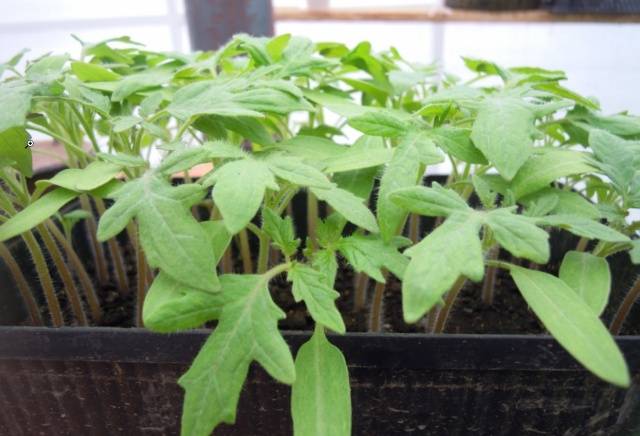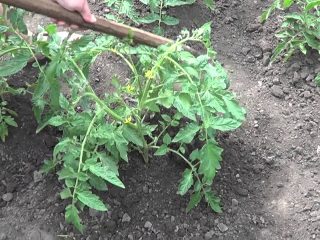Content
Despite the annual appearance of new foreign varieties, time-tested domestic tomatoes do not lose their relevance. One of the most popular hybrid tomatoes for open ground is the Irishka F1 tomato. Gardeners value this hybrid for its unpretentiousness, early ripening, and good fruit quality. Farmers and large entrepreneurs prefer Irishka because of the high yield of this tomato and the excellent keeping quality of its fruits. The hybrid tomato is universal, as it can be used fresh and is perfect for processing and canning.
More detailed characteristics and descriptions of the Irishka tomato variety are given in this article. Here you can also find a list of the strengths and weaknesses of this tomato, recommendations for planting and caring for it.
Interesting facts about tomato
The hybrid was bred by Ukrainian breeders from the city of Kharkov. For more than ten years, the Irishka F1 tomato has been in the state register of the Russian Federation and is recommended for cultivation in the Central region and the North Caucasus district.
The Irishka tomato variety is considered early ripening, since the ripening of its fruits occurs 87-95 days after the appearance of the first shoots from the seeds.A short growing season allows you to grow tomatoes in difficult climatic conditions, avoid peak tomato disease incidence, and harvest early.
Full description of the variety Irishka F1:
- determinate type tomato with end point of growth;
- bushes of medium height, reaching a maximum of 60-70 cm;
- the bush is spreading, densely leafy, with a large number of side shoots;
- on the central stem of the Irishka tomato, as a rule, 6-8 fruit ovaries are formed;
- the leaves are not very large, dark green, tomato-type;
- The first flower brush of a tomato is formed in the axil of the fifth or sixth leaf, subsequent brushes are laid in every third axil;
- Irishka produces rich red fruits;
- tomatoes are round, well aligned;
- the surface of the tomato is glossy, with a metallic sheen, and has no ribs;
- there is no green spot near the stalk, the color of the entire tomato is uniform;
- the usual weight of tomatoes is 80-100 grams, which allows them to be called medium in size;
- there are many chambers inside the fetus - from four to eight;
- the peel on the Irishka tomato is dense and not prone to cracking;
- the taste characteristics are high, the tomato is moderately sweet, with noticeable sourness;
- dry matter in fruits at a level of 3.6%, which allows them to withstand transportation and storage for a long time;
- the yield of the Irishka hybrid is high - about ten kilograms per square meter (on an industrial scale - 350 centners per hectare);
- the tomato tolerates heat and drought well, but is afraid of low temperatures and high humidity;
- the variety is resistant to powdery mildew, tobacco mosaic and microsporium;
- tomato has no immunity to late blight;
- The percentage of marketable fruits in hybrid tomatoes is very high - about 99%.
The purpose of the Irishka F1 tomato is universal - the fruits make excellent pastes and purees, tomatoes are good for first-class preparations, tasty fresh and in salads.
Advantages and disadvantages
Among hundreds of early-ripening hybrids, it is not for nothing that gardeners single out the Irishka tomato, because it has a lot of advantages:
- suitability for growing in open ground;
- heat and drought resistance;
- smooth and beautiful fruits;
- high commercial quality of tomatoes;
- great taste;
- resistance to some dangerous diseases;
- transportability of tomatoes;
- easy care for determinate bushes.
The Irishka hybrid also has disadvantages, and they must be taken into account when growing:
- poor resistance to late blight;
- fear of cold;
- the need to tie up bushes (due to abundant fruiting).
As you can see, these shortcomings are very conditional - with proper care they can easily be eliminated.
Growing rules
Photos of bushes densely covered with smooth, beautiful tomatoes will not leave any summer resident indifferent. Reviews about the Irishka F1 tomato are also mostly positive. All this only encourages gardeners to buy seeds of this variety and grow early tomatoes.
There is absolutely nothing complicated in growing the Irishka tomato - the tomato is grown in the same way as other varieties with early ripening periods.And the first thing a gardener should do is to purchase ready-made tomato seedlings or sow the seeds himself.
Irishka tomatoes are sown as seedlings around the first half of March. These tomatoes can be brought into open ground after 45-60 days - based on this, the exact sowing time is calculated.
Tomato seedlings are brought into the ground when the soil has warmed up well - not earlier than the second half of May. Considering Irishka’s instability to cold, it is recommended to cover the planted seedlings with film for the first time, creating greenhouse conditions.
The soil for the Irishka hybrid should be loamy or sandy loam. More dense soils must be loosened with lowland peat or river sand. Since autumn, the soil has been fertilized with organic matter, potassium nitrate and superphosphate. Choose a place for planting that is sunny and protected from the wind. Elevated areas are more preferable than low-lying areas.
Tomato care
Irishka tomatoes are very unpretentious, so they are also suitable for busy summer residents who have little time to garden. After planting seedlings, tomatoes of this variety need the following:
- Regular watering every 5-6 days.The hybrid should be watered strictly at the root, so as not to wet the leaves and create ideal conditions for the development of late blight. Water for irrigation should be warm. It is better to choose the time in the morning.
- During the season, the Irishka tomato needs to be fed at the root three times. The first fertilizing is carried out 10-14 days after planting the seedlings in the garden bed; organic matter or nitrogenous complexes are used for this. The next stage is before flowering, it is necessary to feed the tomatoes with mineral fertilizers with an emphasis on potassium and phosphorus. When the fruits are formed, add another portion of phosphorus-potassium mineral fertilizers. In the intervals between the main feedings, a couple more foliar feedings are performed - treating the entire bush with fertilizer (especially important during the dry period and during the prolonged rainy season).
- It is not necessary to form a determinate tomato Irishka. But some gardeners speed up the ripening of fruits by cutting off all the stepsons up to the first flower cluster. It should be remembered that this method leads to a decrease in yield.
- The row spacing must be loosened after each rain or watering, or mulch must be used.
- Tomato bushes Irishka F1 must be tied up even before the fruits begin to ripen. If the shoots are not strengthened, they can easily break off under the weight of numerous large tomatoes.
- Bushes must be treated with fungicidal and insecticidal preparations several times during the summer.
Harvesting should be done on time to prevent tomatoes from overripening and not to slow down the ripening of subsequent fruits.Hybrid tomatoes ripen well if picked at the stage of “milk” ripeness.
Review
Conclusion
Tomato Irishka F1 is truly universal. The harvest can be used for personal purposes and for sale. It is cultivated not only in dachas and personal plots, but also in large farm fields.
This hybrid is recommended to be grown in open ground, since in greenhouses bushes are often affected by late blight. Irishka tolerates drought and heat well, but does not cope well with cold and high humidity. The main advantages of the variety are the excellent taste of the fruit, high yield and unpretentiousness.




















